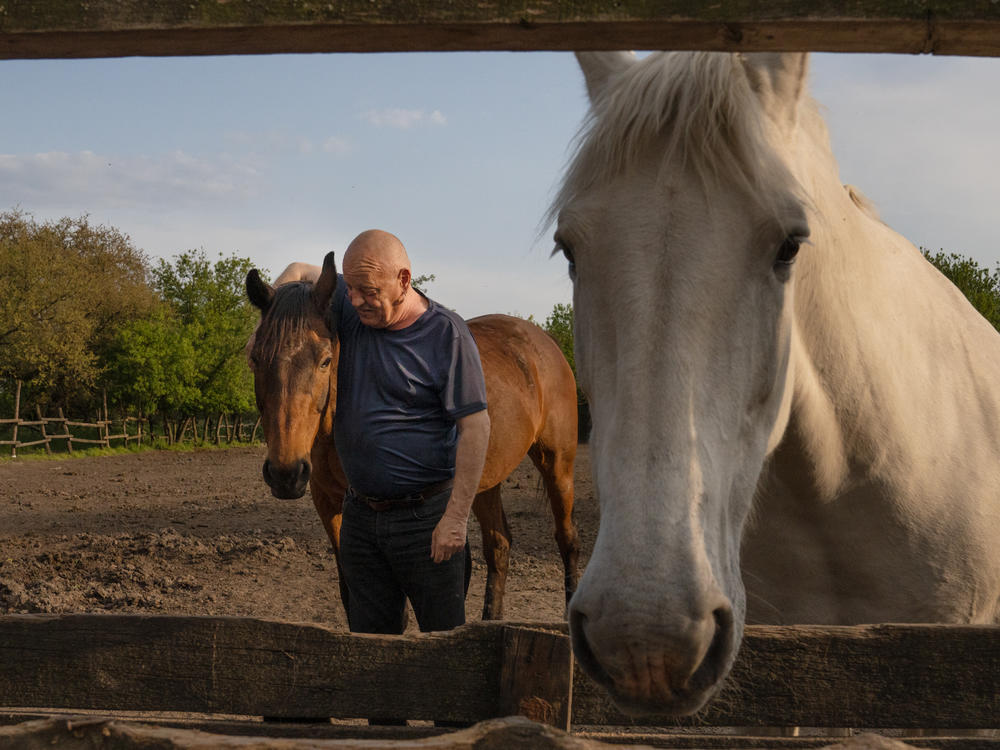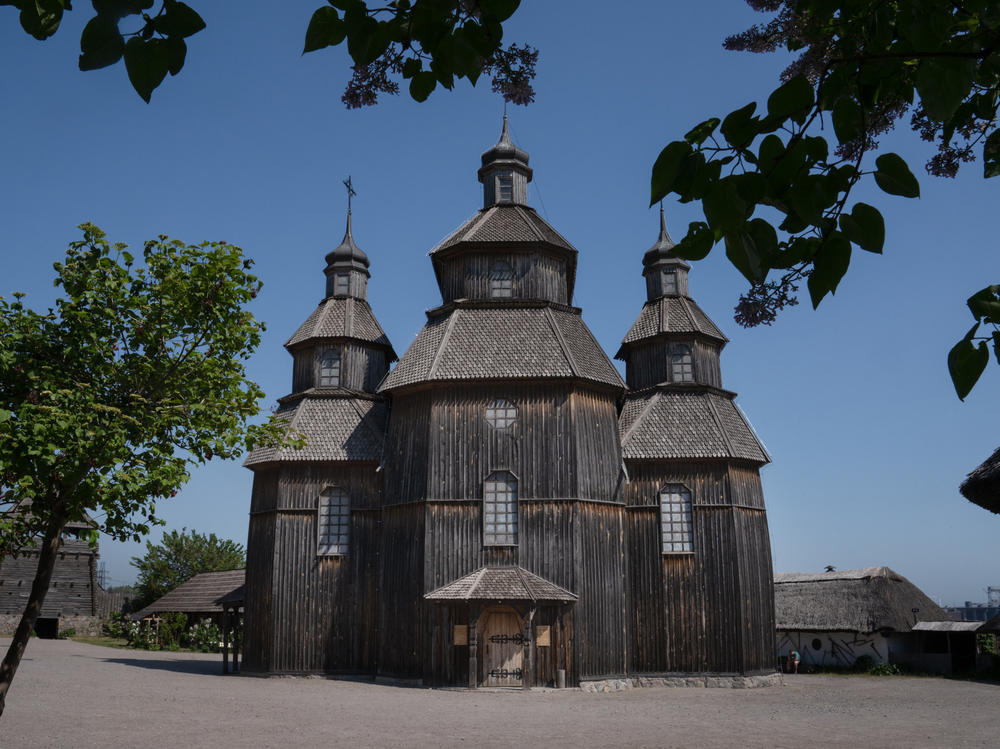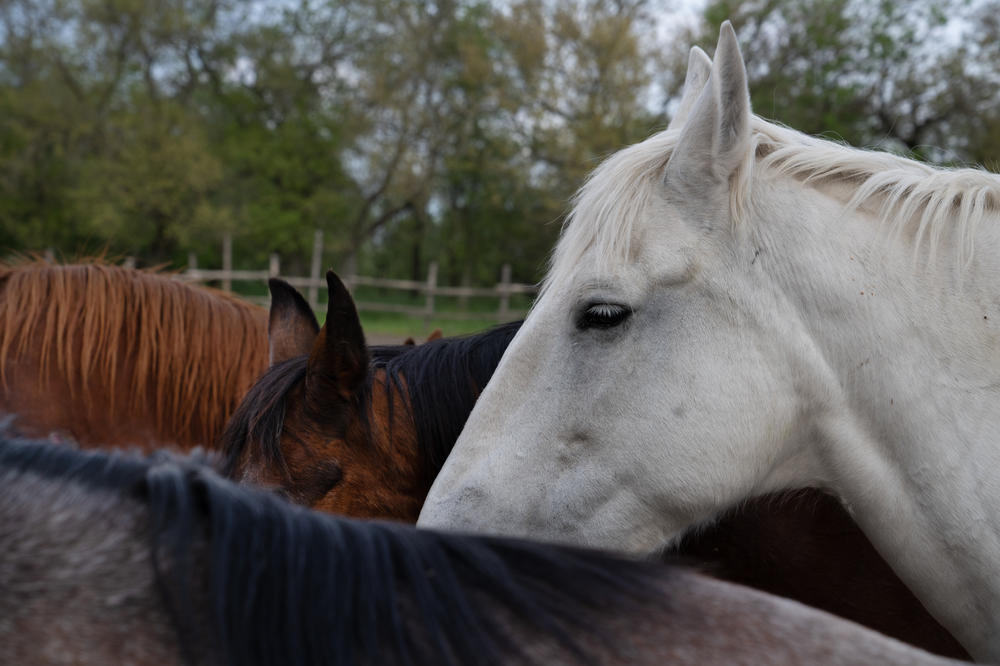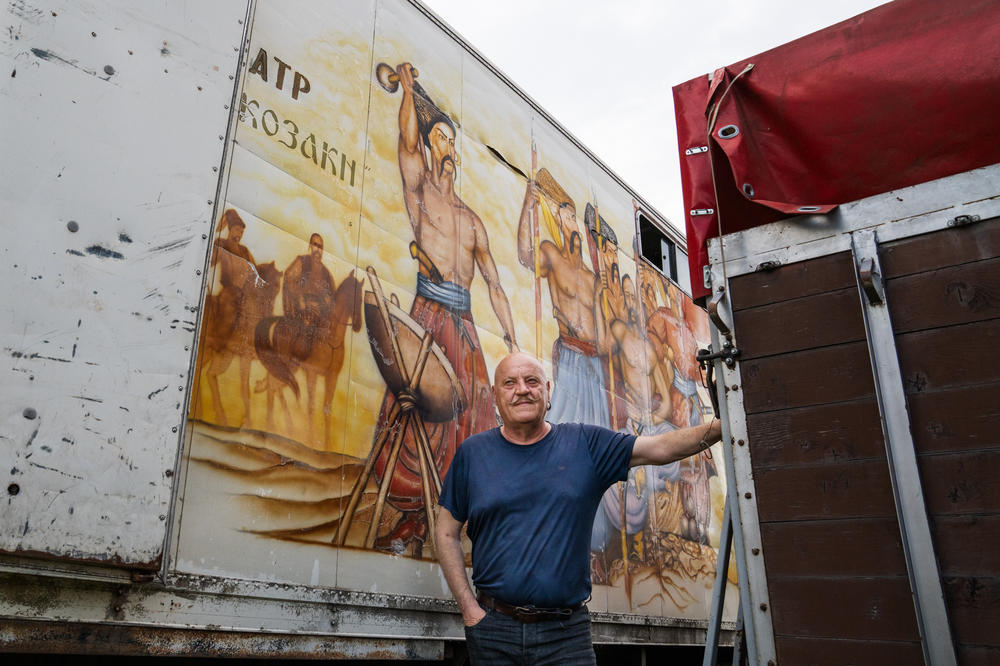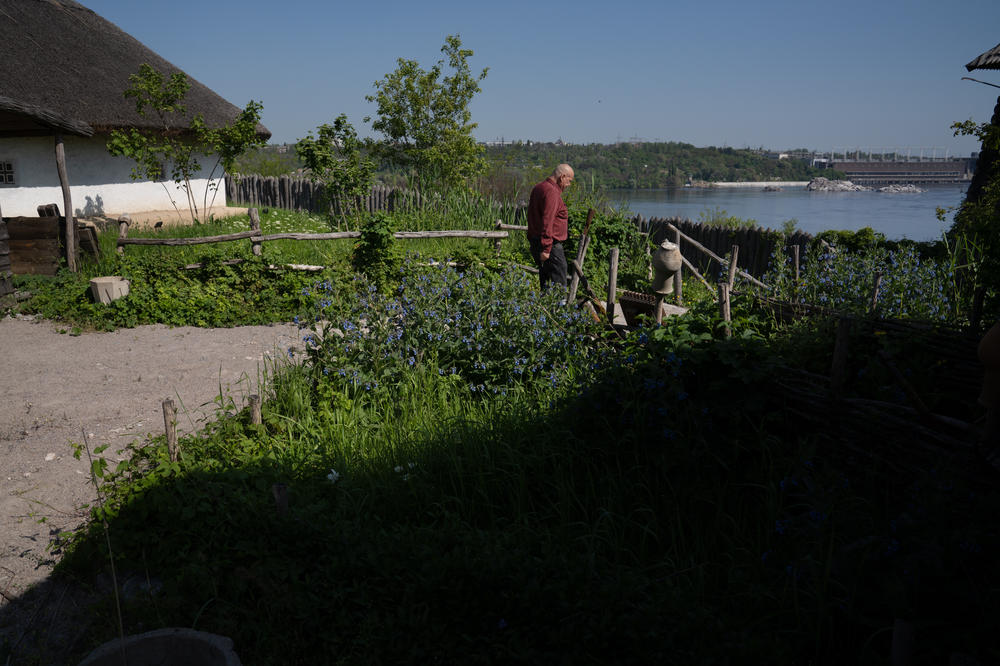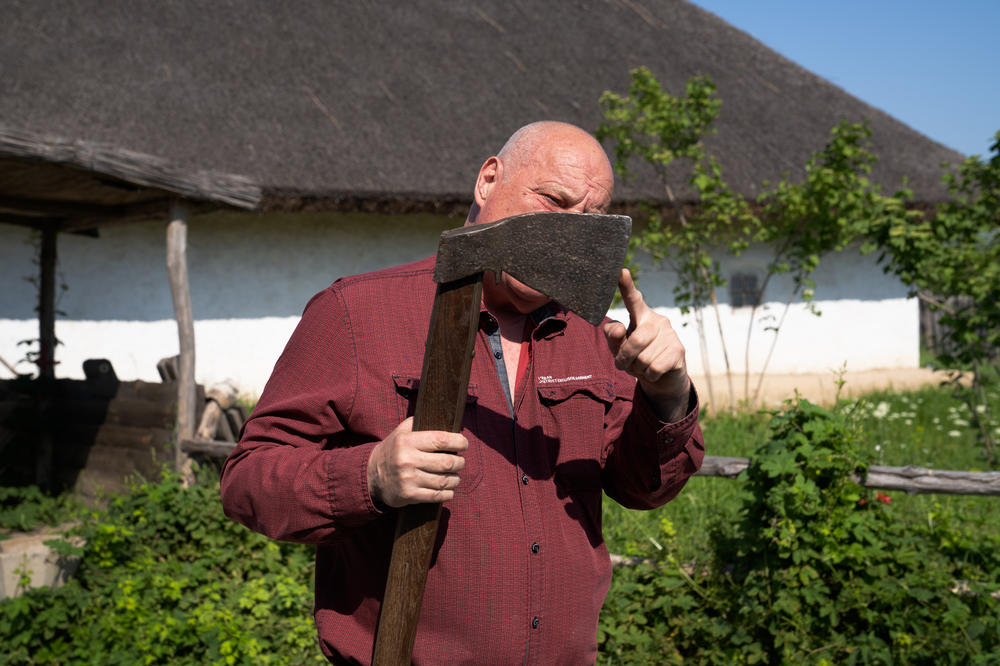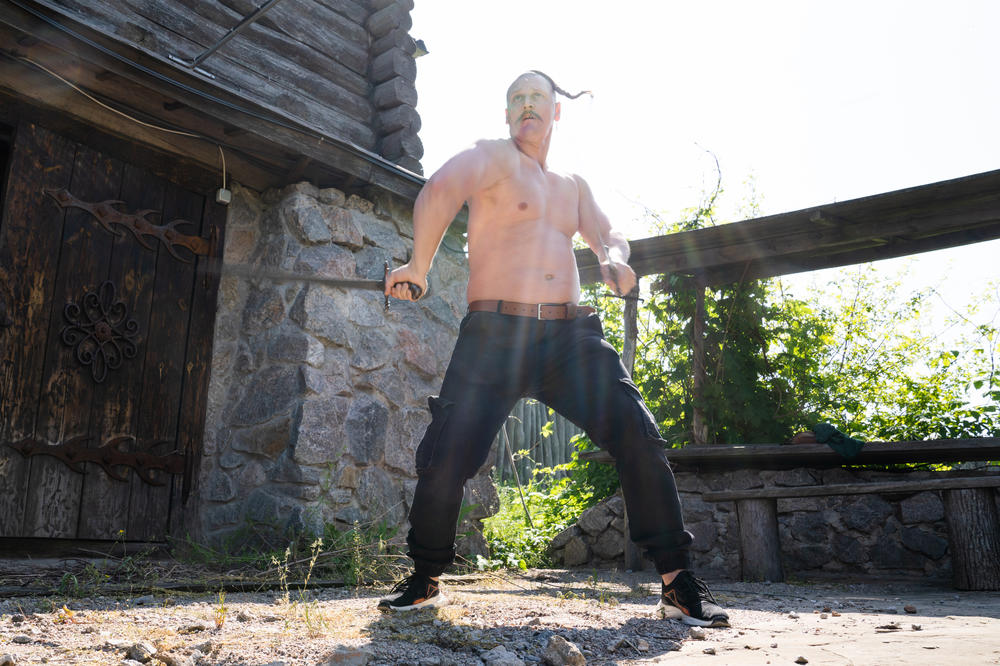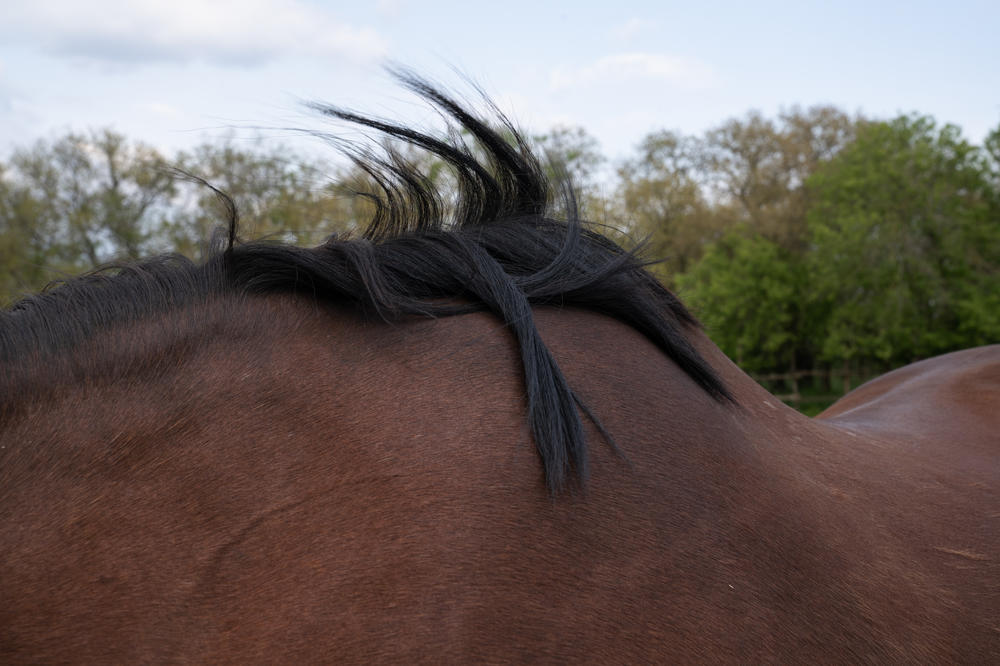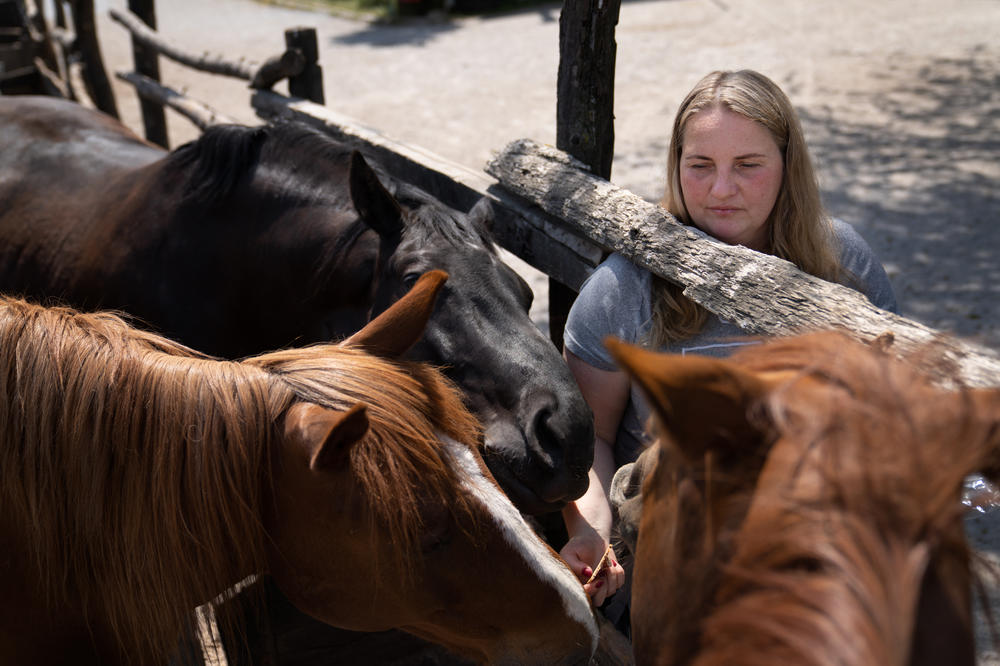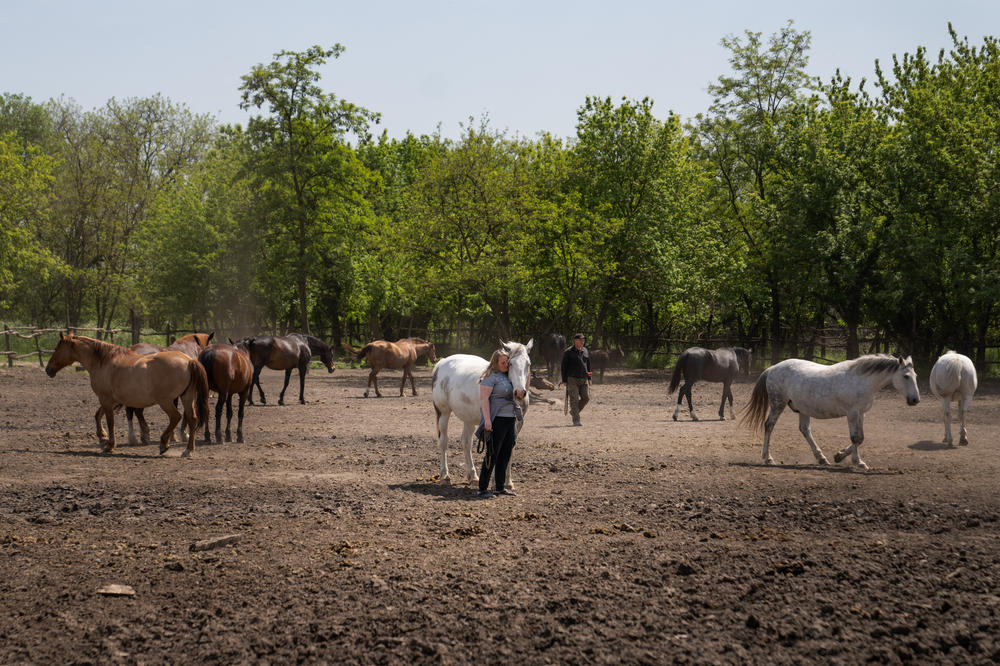Section Branding
Header Content
The Cossacks' traditions live on near the front lines in Ukraine
Primary Content
KHORTYTSIA, Ukraine — This lush, wild island, the largest on the Dnipro River, is just outside the southern city of Zaporizhzhia, not far from the front line where Ukrainian soldiers are trying to reclaim occupied land.
It includes a nature reserve, where horses run free, and was once a headquarters for the Zaporizhzhian Cossacks, 17th century warriors revered in Ukraine for their insistence on freedom and self-governance.
"They are my ancestors," says Yuriy Kopishynskyi, a tall grandfather with a shaved head, twirled mustache and linebacker's build. "They are also part of the Ukrainian story today."
You can find likenesses of Zaporizhzhian Cossacks everywhere in Ukraine — on T-shirts and coffee mugs, in paintings in government offices, on statues big and small. Their hairstyle — shaved, except for a ponytail on top of their heads — is also popular with Ukrainian men and even a few women.
"Legend says that when a Cossack dies," Kopishynskyi says, "God reaches out for that ponytail to pull the Cossack to heaven."
Kopishinskyi sits in a thatched hut surrounded by five protective ducks, near an animal refuge and a horse-riding school run by his daughter. He explains that the world often associates Cossacks with Russia, because some became loyal servants to the czars. But the Zaporizhzhian Cossacks fought invading Muscovite princes.
"They were de facto border guards, protecting their sacred land," he says.
For the last 20 years, Kopishynskyi has trained locals and foreigners to fight like Zaporizhzhian Cossacks — with swords, maces and their bare hands. One of his best students is Andrii Lozovyi, a cheery hulk with a drooping mustache and long oseledets, which he calls "the haircut of champions."
"Every adult, every child wants a hairstyle like that so we can look like our heroes," he says.
Before the war, Lozovyi and Kopishinskyi practiced their combat techniques inside a fenced-in complex lined with weathered wooden houses. This is the reconstruction of a Cossack sich, or a military administrative center. It includes homes, a church and a museum.
Lozovyi disappears into the museum and returns with weapons, including a heavy sword and two axes. He takes off his shirt and expertly swings the sword around.
"I can also do this while riding a horse," he says. "Whether we use horses and swords or howitzers and HIMARS, it all goes back to the same Cossack spirit to defend our land."
Lozovyi says he's been rejected from military service because of multiple bone fractures he suffered falling off horses. Kopishinskyi's other student warriors are all on the front line, and they're fighting other Cossacks who live in Russia and support Moscow. Kopishynskyi bristles.
"The Russian Cossacks were nothing but servants, and all they ever did was submit to the czar. The Zaporizhzhian Cossacks never submitted to anybody."
Except this one time, he says, and there were terrible mistakes. Between 1648 and 1657, the Zaporizhzhian Cossacks rebelled against the Polish Commonwealth but also massacred local Jews and Roman Catholics. Then, in 1654, the Cossacks signed the Pereyaslav Agreement with the Russian czars for military protection. The Russian empire grew and punished those who didn't submit. The Zaporizhzhian Cossacks held out until Catherine the Great, one of the Russian empire's most formidable leaders, disbanded them in 1775.
"The way I see it, the Pereyaslav Agreement helped create the Russian Empire," Kopishynskyi said, "and the Russia we know today."
Now, he says, Ukraine and Poland are close allies, and Ukraine has a Jewish president, whom Kopishynshki calls a brave Cossack. They are defending their land from Russia.
"My own daughter is so strong," he says. "She could fight five Russians."
Anastatasiya Kopishynska, a champion equestrian, is tall and athletic like her father. Back at her riding school, she helps two twin toddler girls onto one of her horses.
"They're not scared," the girls' grandmother says. "They must be Cossacks."
Kopishynska's own young children have been in Ireland since the war, living with her mother. Her husband is fighting on the front line.
"I told my husband, 'Look, be careful out there, because if something happens to you, I will have to head to the front line myself to avenge you,'" she says.
"That's what a Cossack does," she says. And in today's Ukraine, the Zaporizhzhian Cossacks are fighting again.
Copyright 2023 NPR. To see more, visit https://www.npr.org.
